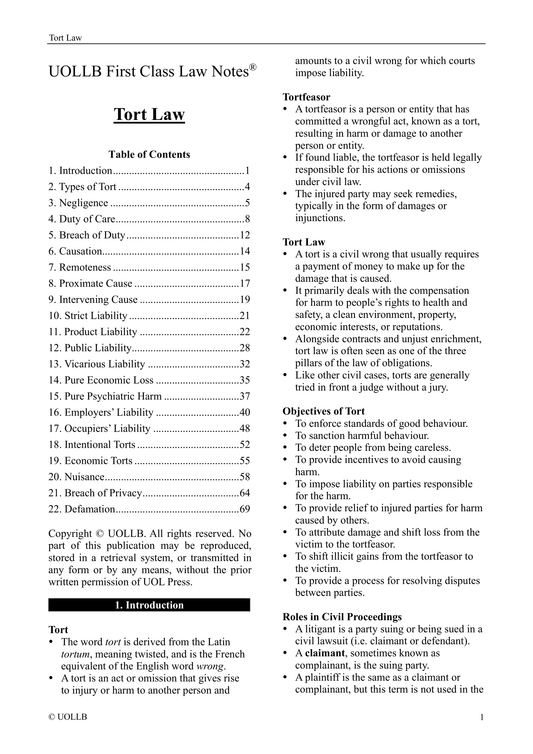Principles in Formulating Rules of Criminal Law
Share
The formulation of rules in criminal law is guided by several fundamental principles that ensure the laws are just, effective, and aligned with societal values. These principles serve as benchmarks for legislators and policymakers to create a coherent and fair legal system. Below are the key principles involved in formulating rules of criminal law:
1. Legality
The principle of legality, often encapsulated in the Latin maxim "nullum crimen, nulla poena sine lege" (no crime, no punishment without law), is foundational in criminal law. This principle dictates that an act cannot be considered a crime unless it has been defined as such by law before the act was committed. This ensures that individuals have clear notice of what constitutes criminal behaviour and protects against arbitrary and retrospective penal measures. Laws must be clearly written and accessible to avoid ambiguity and ensure fair warning to citizens.
2. Harm Principle
The harm principle, articulated by John Stuart Mill, posits that the state should only criminalise conduct that causes harm to others. This principle aims to limit the scope of criminal law to prevent overreach and protect individual liberty. It ensures that the criminal justice system focuses on actions that genuinely threaten public safety and welfare, rather than penalising behaviour that merely offends or is morally contentious without causing actual harm.
3. Proportionality
The principle of proportionality ensures that the severity of the punishment corresponds to the seriousness of the offence. It is essential for maintaining fairness and justice in the criminal justice system. Punishments should be neither excessively harsh nor unduly lenient but should reflect the gravity of the harm caused and the culpability of the offender. This principle helps to prevent abuses of power and ensures that the criminal law operates within reasonable and justifiable bounds.
4. Fairness and Due Process
Fairness and due process are critical principles that underpin the rule of law. These principles ensure that all individuals are treated equally and fairly within the legal system. Due process includes the right to a fair trial, the presumption of innocence, the right to legal representation, and the right to appeal. It also encompasses procedural fairness, ensuring that laws are applied consistently and without bias. These safeguards are essential for protecting individual rights and maintaining public confidence in the justice system.
5. Mens Rea (Guilty Mind) and Actus Reus (Guilty Act)
The principles of mens rea and actus reus are fundamental components of criminal liability. Mens rea refers to the mental state or intent of the defendant at the time of the offence, while actus reus refers to the physical act of committing the crime. For most crimes, both elements must be present for an individual to be held criminally liable. This ensures that individuals are only punished for actions undertaken with a culpable state of mind, distinguishing between intentional wrongdoing and accidental or involuntary actions.
6. Public Interest
The principle of public interest guides the criminalisation of conduct that significantly impacts society's well-being. Legislators must balance individual rights against the collective good, criminalising behaviour that poses a substantial threat to public health, safety, and order. This principle supports laws addressing issues such as terrorism, drug trafficking, and public corruption, ensuring that the legal framework protects the broader community.
7. Autonomy and Liberty
Respecting individual autonomy and liberty is a cornerstone of a just legal system. Criminal law should avoid unnecessarily infringing on personal freedoms. This principle requires careful consideration of whether criminalisation is the least restrictive means of achieving a legitimate public goal. It underscores the importance of protecting personal choices and freedoms from undue governmental interference.
8. Minimal Criminalisation
The principle of minimal criminalisation advocates that criminal law should be a last resort, used only when other forms of regulation or social control are insufficient. This principle promotes the idea that not all undesirable behaviours should be criminalised, especially if they can be more effectively addressed through education, civil law, or administrative measures. Over-criminalisation can lead to overcrowded prisons, strained judicial resources, and the potential for unjust punishment.
9. Restorative Justice
Restorative justice emphasises repairing the harm caused by criminal behaviour through reconciliation, restitution, and rehabilitation rather than retribution. This principle focuses on the needs of victims, offenders, and the community, promoting healing and the reintegration of offenders into society. It encourages alternatives to traditional punitive measures, such as mediation, community service, and restorative circles, which can provide more meaningful resolutions for all parties involved.
10. Maximum certainty
This principle requires that criminal laws accurately and clearly define what actions or omissions are prohibited and the corresponding penalties for breaking these laws. The principle requires that criminal laws be clear, precise, and predictable in order to ensure that individuals are aware of what is expected of them and can act accordingly. Ambiguity or uncertainty in the law can lead to confusion and injustice.
11. No retrospective liability
This principle prohibits the retroactive application of criminal laws, meaning that individuals cannot be punished for conduct that was not illegal at the time it occurred. This principle ensures that individuals have fair notice of what is prohibited and that they are not punished for conduct that was not previously considered criminal.
The formulation of rules in criminal law is guided by several key principles that ensure laws are fair, effective, and aligned with societal values. These principles provide a framework for creating a just and equitable criminal justice system, ensuring that criminal laws are fair, just, and predictable, and that individuals can be held accountable for their actions in a transparent and proportional manner.




























































